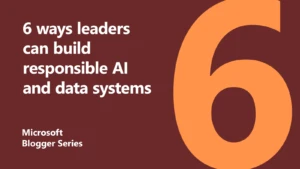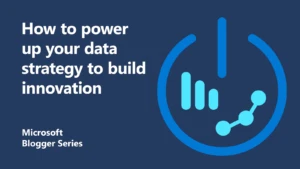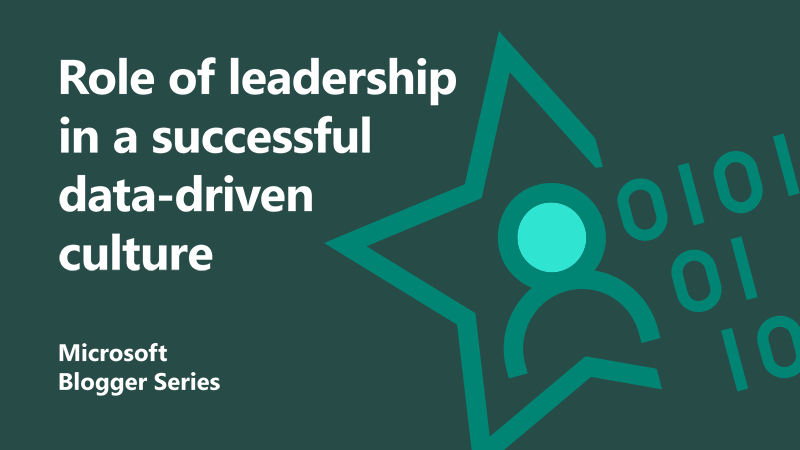
The role of leadership in a successful data-driven culture
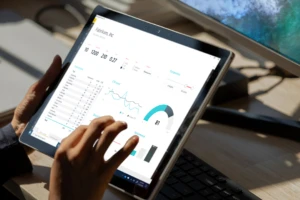 Recently, the topic of creating a data-driven culture is becoming more prominent and leaders are wondering how to create one in their organisation. However, before we can discuss the how, we need to talk about the what. After all, what does a data-driven culture even mean? It sounds great, but how do leaders know when they have one? And come to that, why do leaders need one?
Recently, the topic of creating a data-driven culture is becoming more prominent and leaders are wondering how to create one in their organisation. However, before we can discuss the how, we need to talk about the what. After all, what does a data-driven culture even mean? It sounds great, but how do leaders know when they have one? And come to that, why do leaders need one?
Let’s dissect this a little. Firstly, what is culture? It’s quite an ethereal term and one I have often struggled with. Someone once shared a simple definition that resonated with me: Culture is “what you do when your boss isn’t watching”. Culture is something ingrained into how you work and think, which is important. You can’t simply say you have a culture as an organisation. You must live and breathe the culture.
And what do we mean when we say data-driven? It’s not about collecting all data. In fact, lack of data isn’t a problem for most organisations! However, what they often struggle with is extracting value from that data. Therefore, what we are really talking about is decisions that are driven from data. Because we use the data to inform and justify our decisions, it needs to be good quality.
So, a data-driven culture is one where the organisational norm is that decision making is driven by data. How can leaders successfully build this culture? If we look at the journey to a data-driven culture, I think of four steps.
1. Create the right mindset for a data-driven culture
 To me this is the most crucial step – leadership must be clear. I don’t just mean that leaders need to talk about using data. Leaders need to demonstrate how they place data at the heart of what the organisation is trying to achieve every day.
To me this is the most crucial step – leadership must be clear. I don’t just mean that leaders need to talk about using data. Leaders need to demonstrate how they place data at the heart of what the organisation is trying to achieve every day.
In order to thrive, leaders must be clear about what their organisation’s purpose and outcomes are. A great way to create accountability and direction is to tie those purposes and outcomes to measures of success.
At Microsoft, we use an approach called Objectives and Key Results (OKRs) to organise and align our activities to transform. The focus on key results inspires a data-driven mindset across the organisation. It also provides a common data driven focus and language for everyone in the business – we all start to think about the measures that matter.
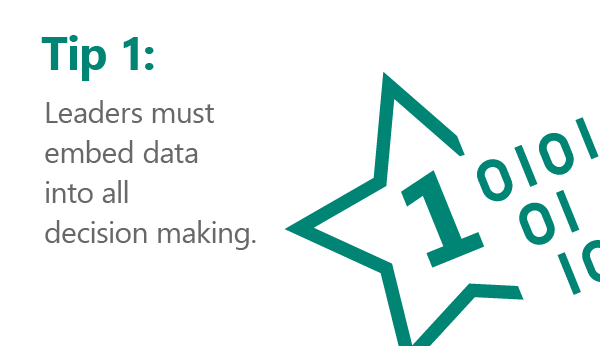
2. Find organisational and individual value in a data-driven culture
When looking at driving change I have to say that unfortunately we, as humans, can be a selfish bunch. Often, one of the biggest drivers of successful change is understanding what is in it for the individual. Within Microsoft we apply the PROSCI change methodology. At the heart of this is the ADKAR change model. There is the adage: organisations don’t change, people do. ADKAR is an acronym for five elements of change for individuals:
- Awareness of the need to change.
- Desire to participate and support the change.
- Knowledge on how to change.
- Ability to implement desired skills and behaviours.
- Reinforcement to sustain the change.
To embed the change within our people and therefore to drive change in the organisation, we really need to create the desire to change. If people are told the future is a data-driven culture they simply won’t buy into it and commit to it. Therefore, demonstrating change and demonstrating value from data fast is important. When people see that the change works and is more effective, they’ll want to change.
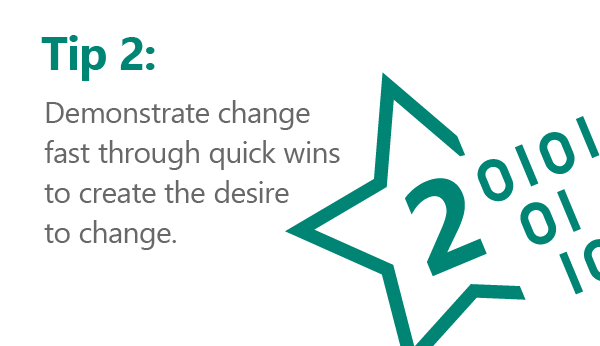
3. Build your and your employee’s skills
 If we are working on changing our mindsets, we also need to prepare our people with the right skills and tools. Everyone needs basic data literacy skills and we all different levels of knowledge. Some people have inherent data literacy skills. Others may need support to be able to understand and assimilate data then interpret and analyse it. Then, once we have the basics in place, we need to progress to understand how we can use the tools at our disposal to answer the business question we have. However, we can’t just throw tools like Excel, Tableau and PowerBI at our people and expect them to be able to optimise and transform our organisations.
If we are working on changing our mindsets, we also need to prepare our people with the right skills and tools. Everyone needs basic data literacy skills and we all different levels of knowledge. Some people have inherent data literacy skills. Others may need support to be able to understand and assimilate data then interpret and analyse it. Then, once we have the basics in place, we need to progress to understand how we can use the tools at our disposal to answer the business question we have. However, we can’t just throw tools like Excel, Tableau and PowerBI at our people and expect them to be able to optimise and transform our organisations.
Leaders need to help their employees on their learning journey by democratising data access, building learning opportunities and give employees the time to take those opportunities. One way you can do this is to build re- and upskilling into employee KPIs. In our data journey we move from a data consumer to data analyst, citizen data scientist and beyond. Not everyone starts in the same place. Everyone’s learning path is different and the KPIs need to reflect that.
Microsoft provides access to great learning tools to support you and your employee’s individual journey. These include Microsoft Learn – the front door to all your training needs whether you are just starting out or an experienced professional, with role-based learning paths. You can also explore how to use AI in your organisation with the Microsoft AI Business School.
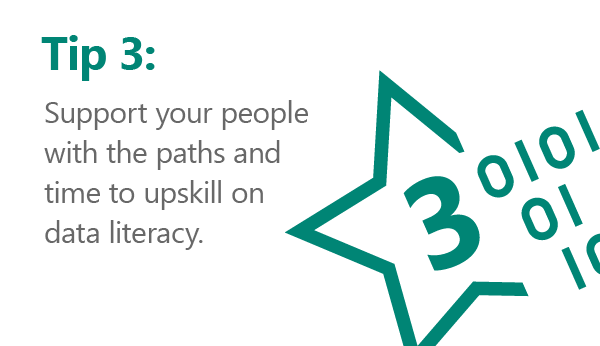
4. Empower employees with the right tools
So, now you’ve changed your mindset and the mindset of your organisation. You’ve seen the value of a data-driven organisation and are building relevant skills. But what tools do leaders need to get insights?
Firstly, organisations need quality, curated data that is easily accessible. Not everyone in the business is a data engineer who can find, cleanse and prepare data for analytics. You need an easy way for everyone in an organisation to find the business data that they need. It also needs to be presented in a manner that is easily understandable – using the language they understand. This is where a data marketplace or data catalogue is invaluable. At Microsoft we have Azure Purview, our unified data governance platform. This is a platform that automatically discovers data wherever it lives in your organisation. It can classify data and identify data lineage; but importantly it also presents a data catalogue of your data using business language. The data catalogue is a core element of a successful self-service strategy.
Using self-service data insights tools like PowerBI provides easy access to pre-prepared and certified datasets. This enables your people to be confident in the quality of the data source and empowers them to discover new insights from the data. It also allows the data owners can enable controls to ensure colleagues can only see the data they need to.
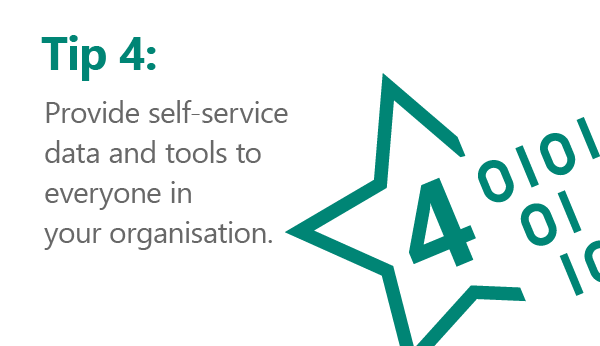
A continuous journey to a data-driven culture
These four steps will help you build a data-driven culture. I also want to remind you of the final step in ADKAR: Reinforcement! It’s critical that this is not seen as a one-off initiative. You need to work hard at reinforcing the change to build a successful data-driven culture. If people don’t use these new skills, mindset and tools, it is the case of use it or lose it. This can be tough – but creating a champion network focused on data is a wonderful way to organically drive and embed the culture.
Find out more
Build a data-driven organisation
Peer to peer interview: Unite your data strategy and culture
About the author
 James is a Digital Advisor in Microsoft Consulting Services. He is focussed on helping customers realise their business outcomes and purpose by enabling their digital transformation with advanced cloud technologies – with a particular focus on data, AI, automation and sustainability. Prior to joining Microsoft in 2014, James held several roles across financial services (HSBC, Schroders), public sector (Scottish Water) and consulting (PwC).
James is a Digital Advisor in Microsoft Consulting Services. He is focussed on helping customers realise their business outcomes and purpose by enabling their digital transformation with advanced cloud technologies – with a particular focus on data, AI, automation and sustainability. Prior to joining Microsoft in 2014, James held several roles across financial services (HSBC, Schroders), public sector (Scottish Water) and consulting (PwC).

